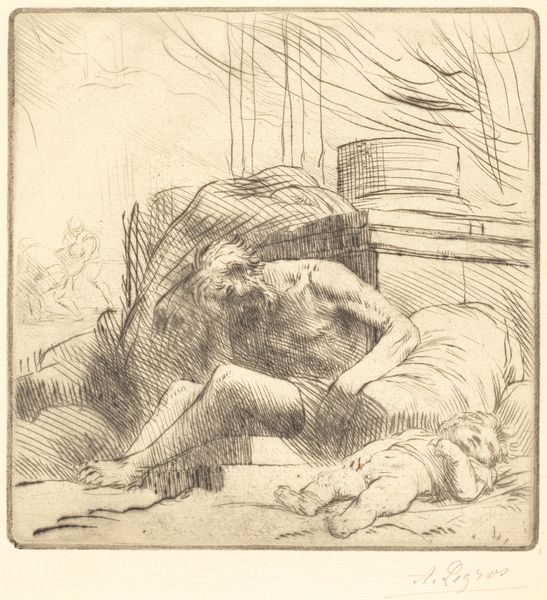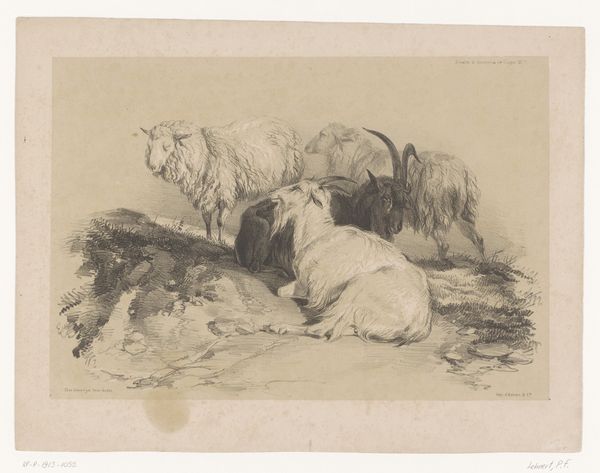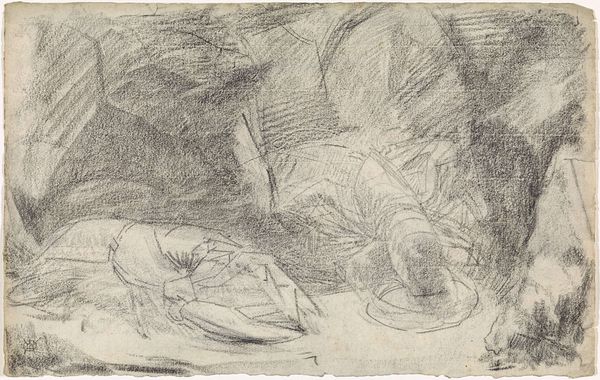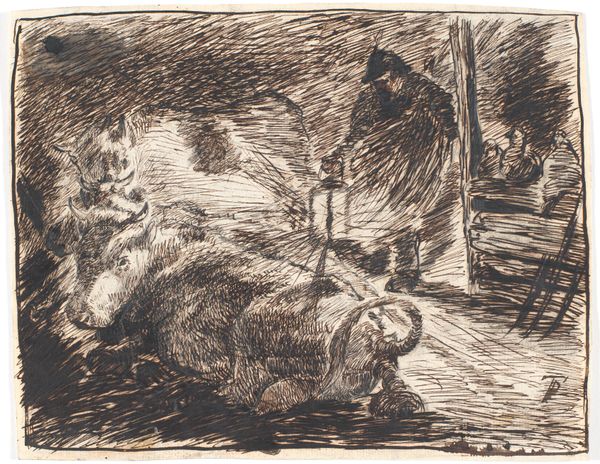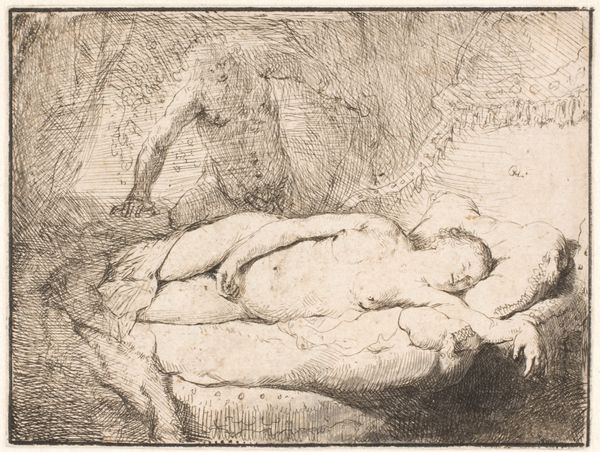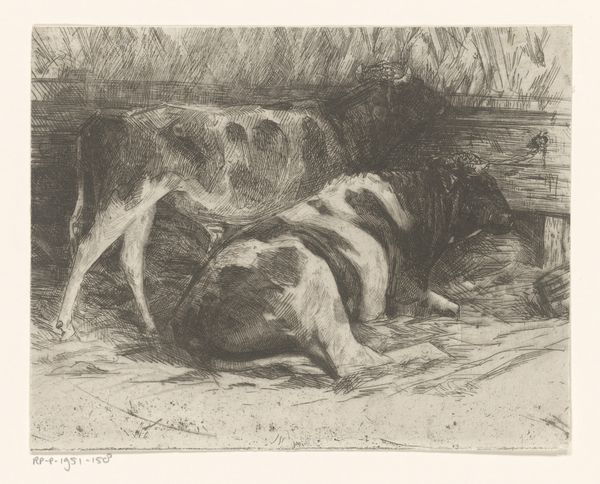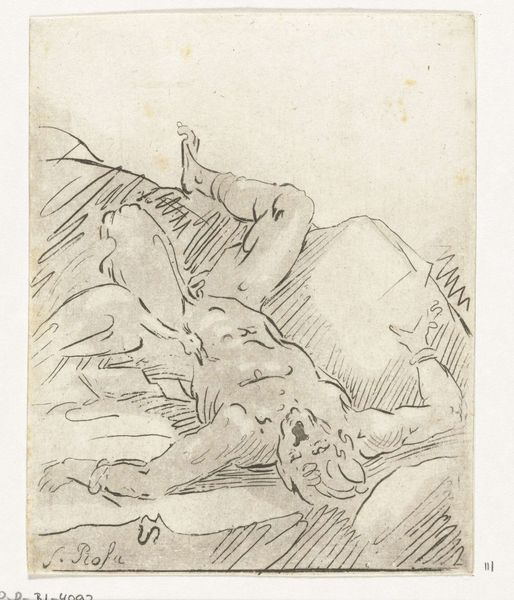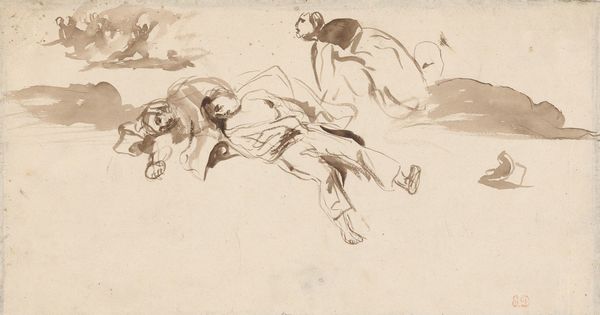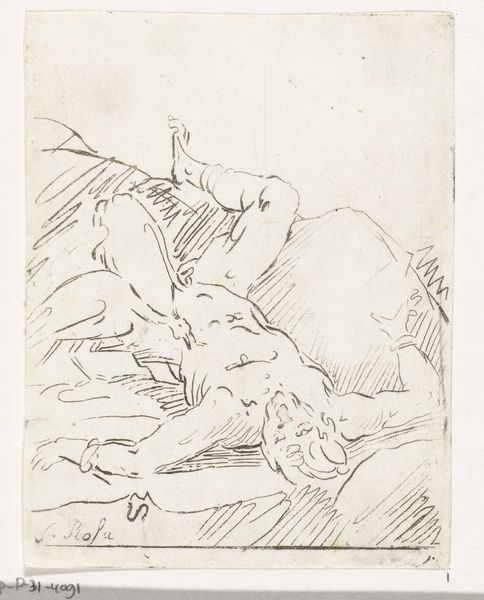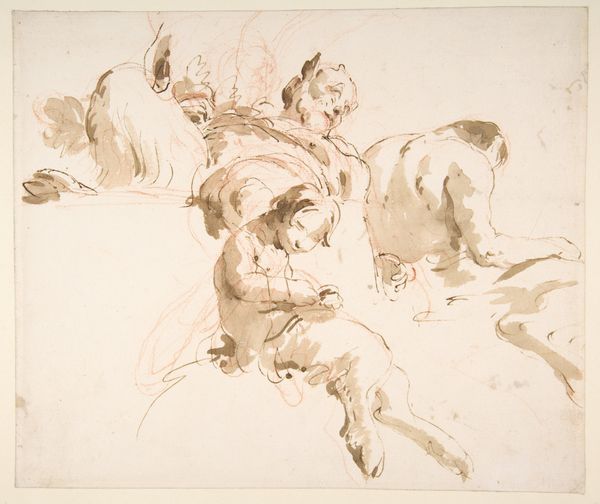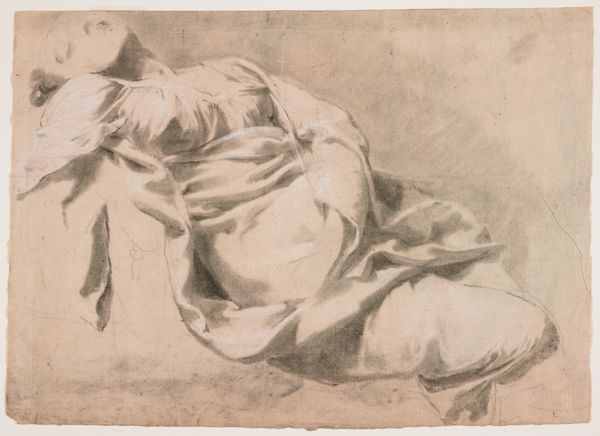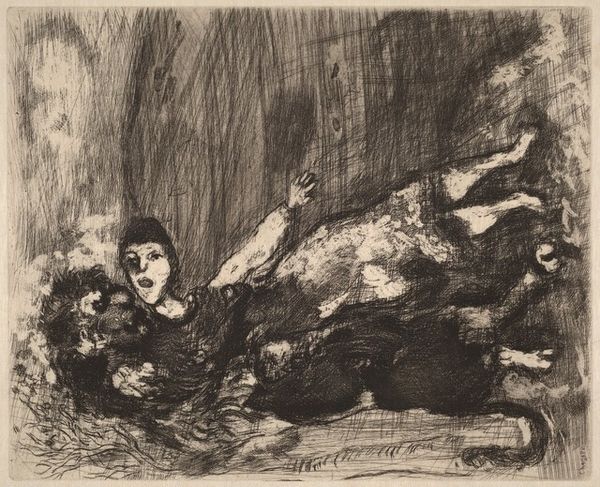
print, etching
#
16_19th-century
# print
#
impressionism
#
etching
#
pencil sketch
#
charcoal drawing
#
pencil drawing
#
italian-renaissance
#
nude
#
realism
Dimensions: sheet: 45 × 59.6 cm (17 11/16 × 23 7/16 in.) plate: 23.7 × 50 cm (9 5/16 × 19 11/16 in.)
Copyright: National Gallery of Art: CC0 1.0
Curator: Immediately striking! There's a disquieting energy in this reclining figure, a certain imbalance evoked by the positioning of the body. Editor: Indeed. We're looking at Luigi Conconi's "Intoxication", also known as "Ebbrezza," an etching dating back to 1888. It’s a potent commentary, no pun intended, on societal ills through its focus on production. Look at those bottles in the corner. Curator: You know, my initial thought was that it captured a scene of melancholic reflection—the downward gaze, the smoke, the stillness—a pause between acts. I wonder about Conconi’s technical decisions here: the tonal range and the sharp contrasts. It conveys, I think, not so much inebriation but almost a post-coital resignation or distress. Editor: Distress, absolutely, and stemming from the very structure of the social order. The etching medium itself, and the multiple impressions it allows, speak to broader circulation. This wasn’t just some wealthy patron’s private indulgence, this image could spread. Consider who made those bottles. Curator: A good point. But let's not ignore Conconi’s handling of light and shadow. How strategically deployed! See how it isolates and almost sanctifies the figure, giving it a haunting quality? It elevates what might have been a straightforward social critique to something more existentially probing. Editor: It is true that he creates a space with definite echoes to sacred art—note that the female nude historically becomes acceptable, more easily commissioned as "penitent Magdalene" for instance, in a moment of grief and reconsideration for their immoral behavior—he gives visual form to what he sees as this social malady and attempts, maybe, to moralize it? Curator: The title itself, "Intoxication," acts as a focal point, influencing our perception. But to me the emotional force here transcends the immediate message. It becomes a potent visual treatise, even outside any explicit societal statement of critique against consumerism. Editor: For me, considering the context of production is the very lens through which that power is focused. The availability, cheapness and wide circulation of alcoholic drinks in the nineteenth century speaks of deep social imbalances and abuse which I think he is hinting at. I think that makes the piece more than an atmospheric snapshot: the technique makes that available. Curator: So, while my focus remains on formal artistry—the use of line, form, contrast, the human drama –your eye immediately moves to a bigger sphere of influence? Editor: Yes. I will certainly not discard the material, or the materials themselves! I think they both work to achieve, if nothing else, an interesting discussion.
Comments
No comments
Be the first to comment and join the conversation on the ultimate creative platform.
